[Apple II, SSI]
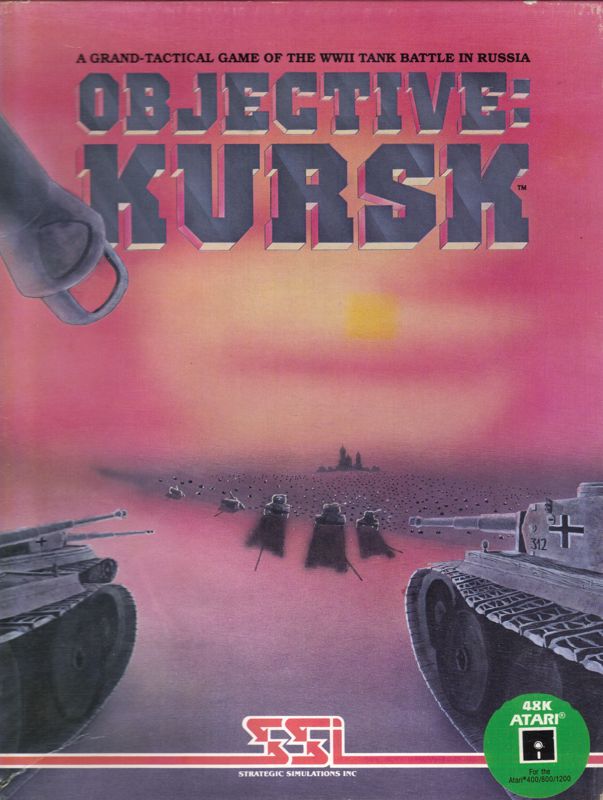
I have stated this several times, but I consider the battle of Kursk the worst-designed battle of WW2. As the Germans, you must grind against a force roughly twice your size, entrenched behind prepared positions and several layers of mines; as the Soviets, this is a tower defence, except with more towers than the Germans have units. I was therefore dreading Objective Kursk, Gary Grigsby’s first take on the battle at the tactical level, but well I had to play it. At least it will be short: the game starts the night of the 4th of July 1943 and ends the night of the 15th, with each day taking only 2 turns, so 23 turns in total.
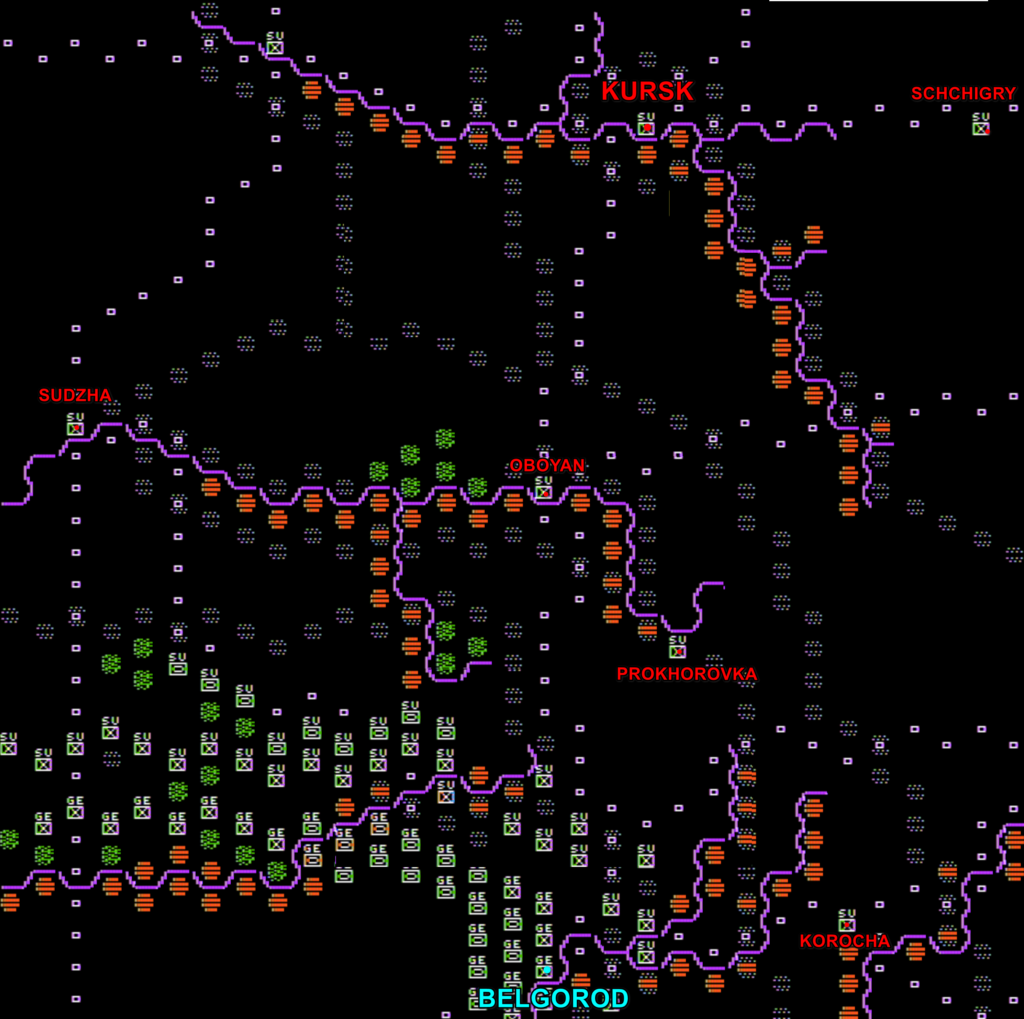
Note how many mines (the group of dots) there are!
My first attempt to play Objective Kursk was immediately after finishing Grigsby’s War in Russia in March of this year. It was exactly what I expected: my German force was facing a mix of Soviet units, mines, defensive terrain, Soviet units in the middle of mines, Soviet units behind defensive terrain and Soviet units in the middle of mines behind defensive terrain. I opened the details of one unit and received way more information than I knew what to do with, down to the number and size of mortars in each combat unit.
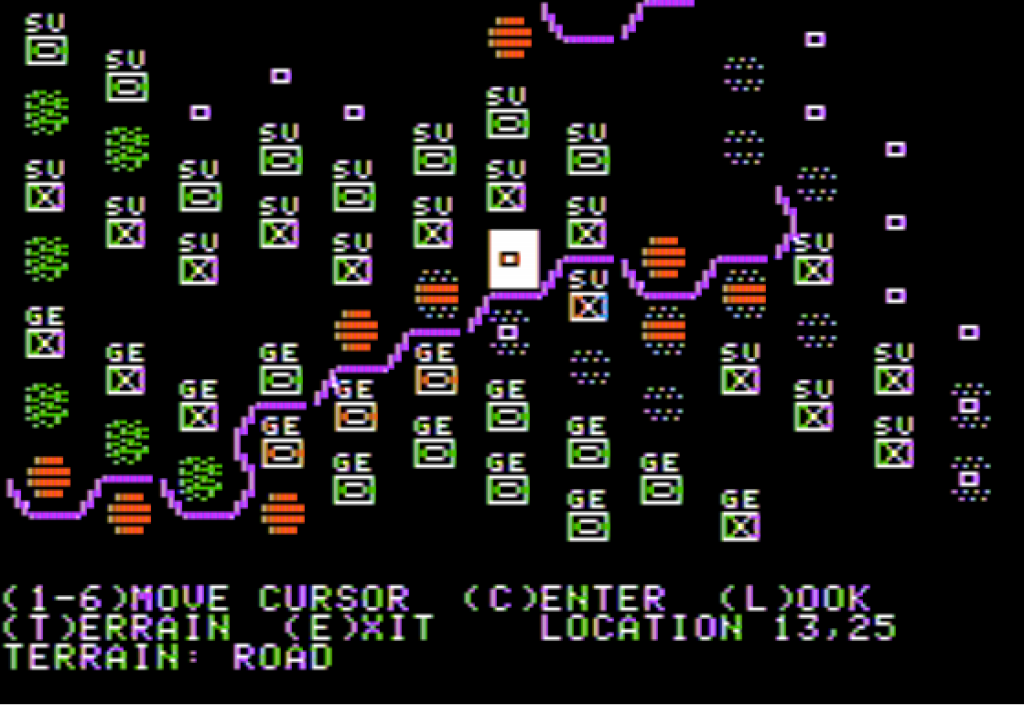
After agonizing for some time, I gave a complex set of orders, and then when the game resolved my orders… exactly none of my units moved, because I had not changed the mode of my units from “Static” to “Mobile” and the game does not understand that if you order one of your units to move North twice then pivot North-West it means you don’t want it to be static. After this failure, I restarted the campaign and painstakingly gave a valid set of orders, which allowed me to watch my units move for a short time, before being stopped dead in their tracks (or hooves, this being the German army) as they reached the enemy line. I decided I would cover Computer Diplomacy instead.
Three months later, I am back with a vengeance.
A. The Breach (4th to 6th of July – turns 1-4)
As historically, Objective Kursk is all about piercing the first line of defence and then dashing forward as fast as possible before the second and third lines get manned. I approach the challenge as I would a puzzle game – I confess I even opened the game on the Soviet side to understand their deployment – and tested different sets of orders to get an intuitive idea on how battles are resolved, because the manual is of no help. I eventually opt for the strategy below to open my offensive, which will be after that, as usual, ironman.
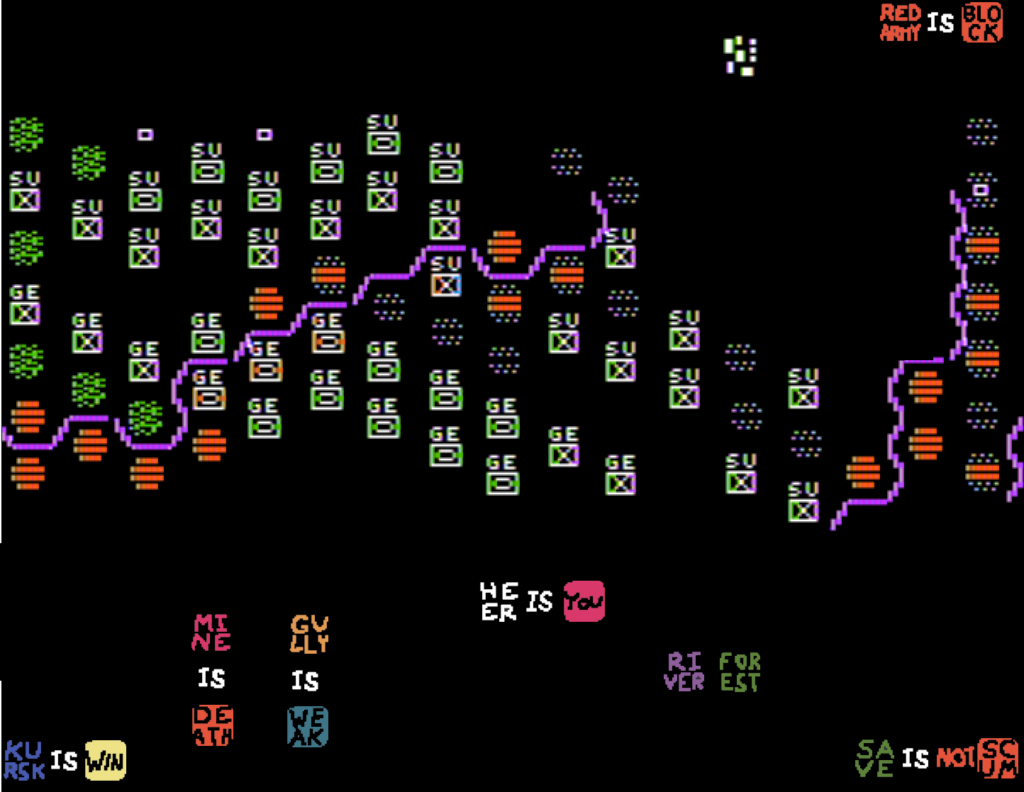
The fastest way to Kursk is the road, which coincidentally is protected by a bit fewer units than the rest of the front, so my plan is to drive a wedge between the Soviet forces behind the gully in the North and those defending the road in the North-East, and a frontal attack right in the middle of the latter group to be in position to split it even further. After that, I hope to be able to either destroy or at least chase the infantry groups guarding the road while preventing the rest of the Soviets from coming in support. After that, the road is open to Kursk. That’s a long shot, but that’s all I have!
The first part of the plan goes almost as expected: I dislodge everything that I wanted dislodged, and my units end where I wanted them to be.
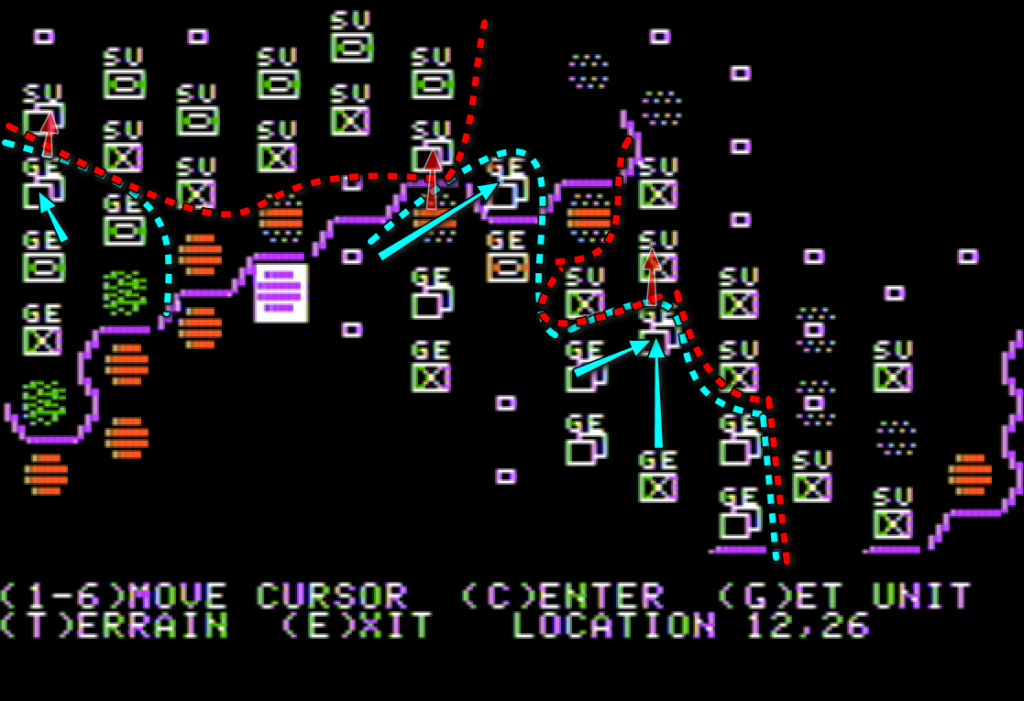
The second part of the plan goes, well, fine overall I guess? I destroy one of the infantry units on the right and create a gap large enough for my units to pass, even though I don’t manage to expand my wedge much.
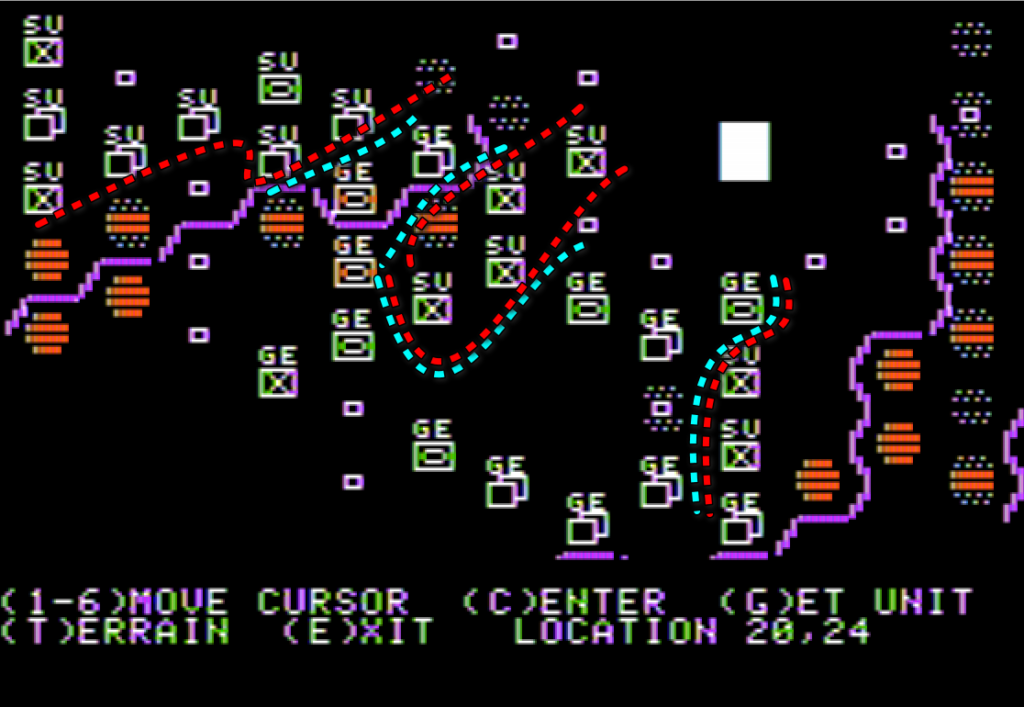
This is a good start, and I can already send some units North, but the situation is not perfect yet: supply cannot pass through enemy zones of control so while my units can pass, my supplies cannot at the moment – I need to expand the gap.
It is not a trivial task! In Objective Kursk, a unit retreats if its disruption level exceeds its morale rating (typically 60% to 80% for the Soviets). It is not easy to force your opponent above this threshold: units in static [defensive] posture have a combat bonus, towed weapons are hard to use in attack but devastating in defence and just moving next to the enemy exposes you to disruption (and damage) by mines and to opportunity fire if you manoeuvre within enemy zones of control. If you fail to dislodge your opponent, the disruption level is reset at the end of the turn, leaving you worse off as your attacks were presumably more costly than their defence.
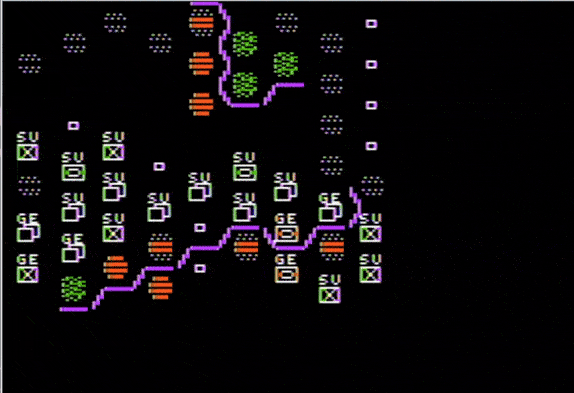
Still, I manage to enlarge the gap and destroy units blocking the road. On the morning of the 6th of July, the opening in the Soviet lines is 15 miles large. My most forward-thinking officers call the restaurants in Kursk to book a table – there is no more infamous “mines + gully + army” combination to go through.
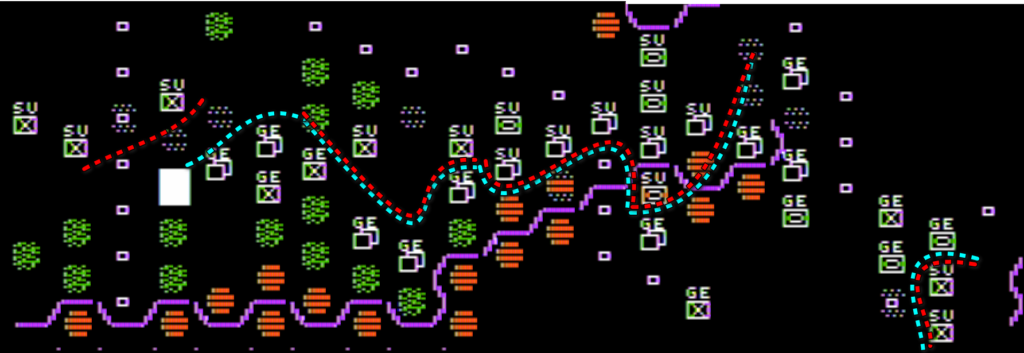
In the centre, my pinning attack already petered out as the Soviet air force and tanks pinned down my pinning units – I disengage and bring the units back to where my main effort is. In the West, on-and-off infantry combat will take place until the end of the game with no real impact on the rest of the battle.
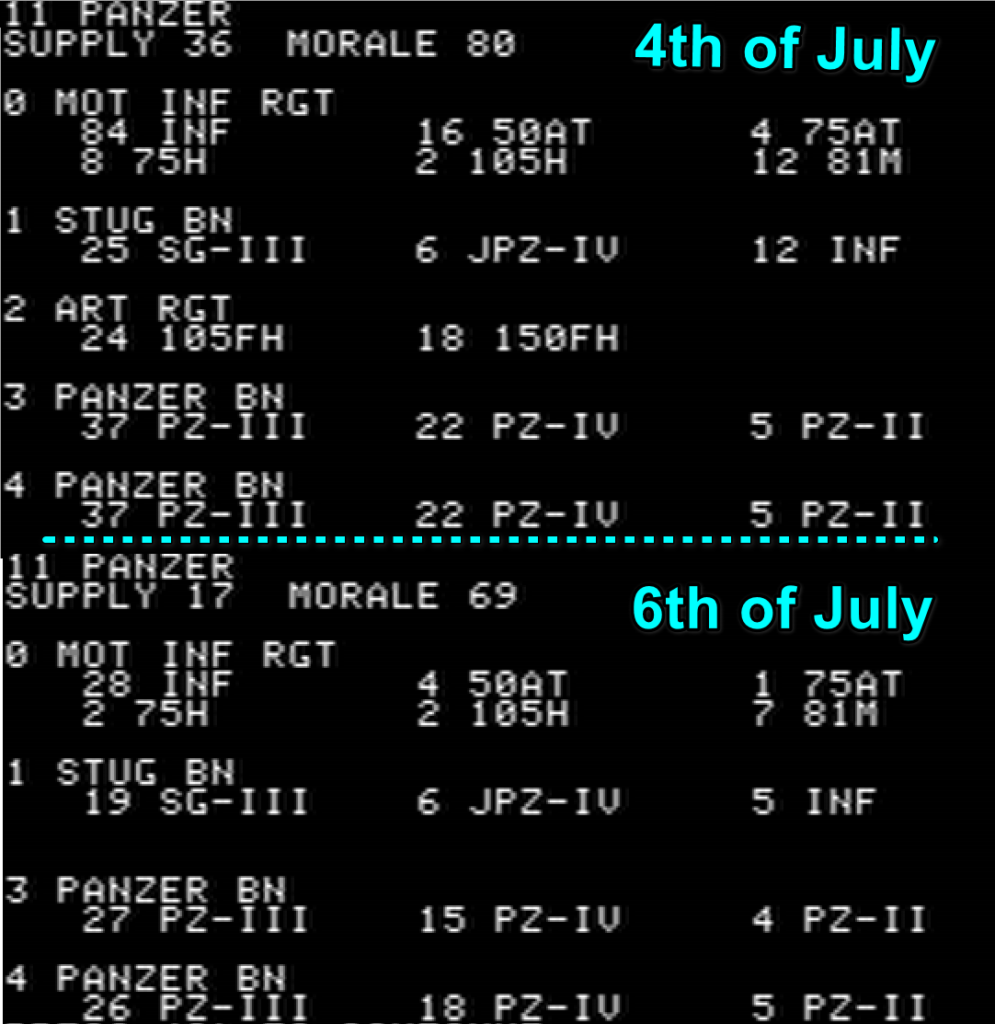
B. Exploits & exploitation (6th to 8th of July – turns 5-9)
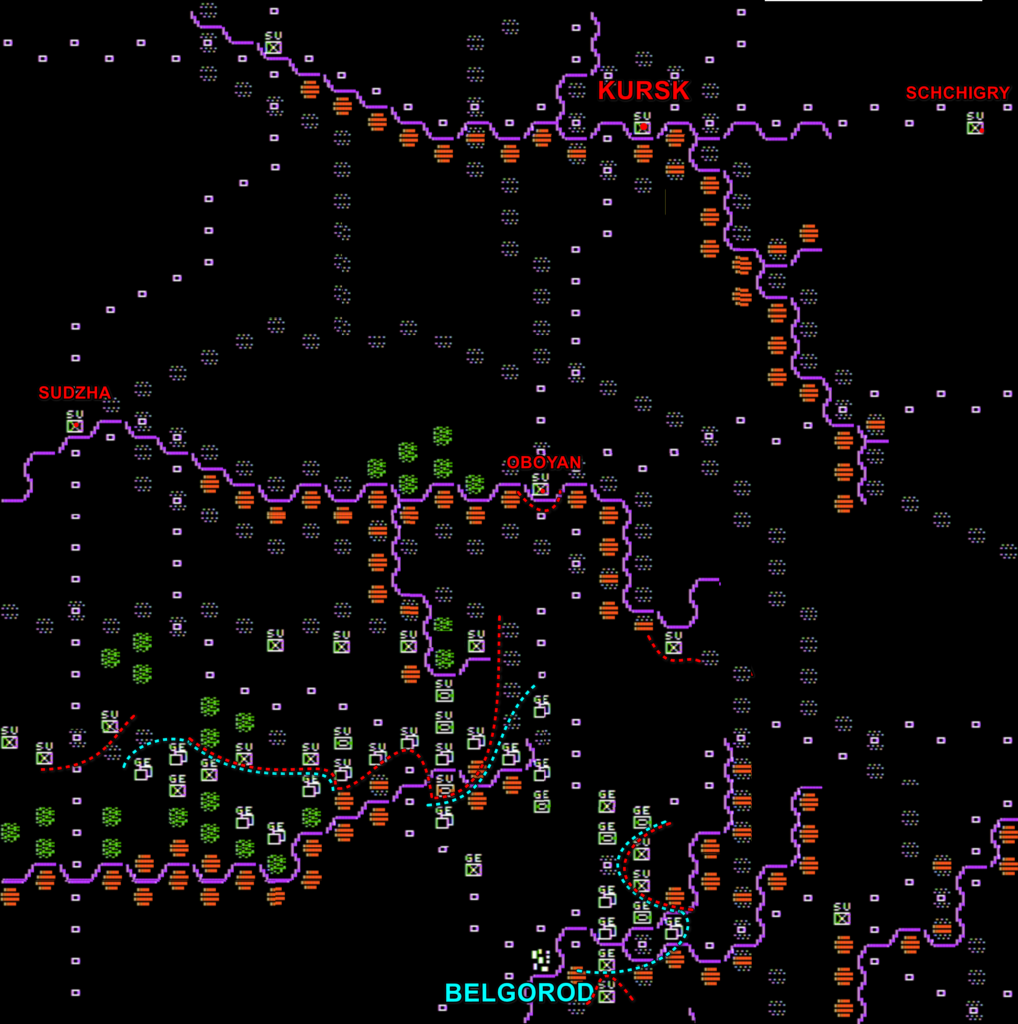
The front is wide open, and there is nothing between the tip of my armoured spearhead and Oboyan, halfway to Kursk. This may not last however: the Soviets are moving almost all of their forces East to plug the breach, and I can expect Soviet reinforcements to arrive the night of the 6th, the 7th and the 8th. I give myself 3 intermediary objectives:
- Push my mechanized combat groups as much North as possible, before the Soviet infantry in the second line cut off the road to Oboyan,
- Prevent the Soviets from crossing the gulley South-East toward Belgorod,
- Destroy the two remaining units North-East of Belgorod,
On the morning of the 7th, I get an excellent surprise: while the Soviets received 3 Guard Tank divisions in reinforcement, they moved them by “Road” movement. Road movement is fast (24 tiles/turn for mechanized units!) and executed immediately (without waiting for the turn resolution phase), but units in Road movement can’t use their towed guns, defend 40% worse with the rest and don’t project a zone of control. Units in “road” mode are therefore extremely vulnerable, and should absolutely not be left within range of the enemy. As it happens, the computer ended the movement of two of its new Guard Tank divisions within range of my own forces:
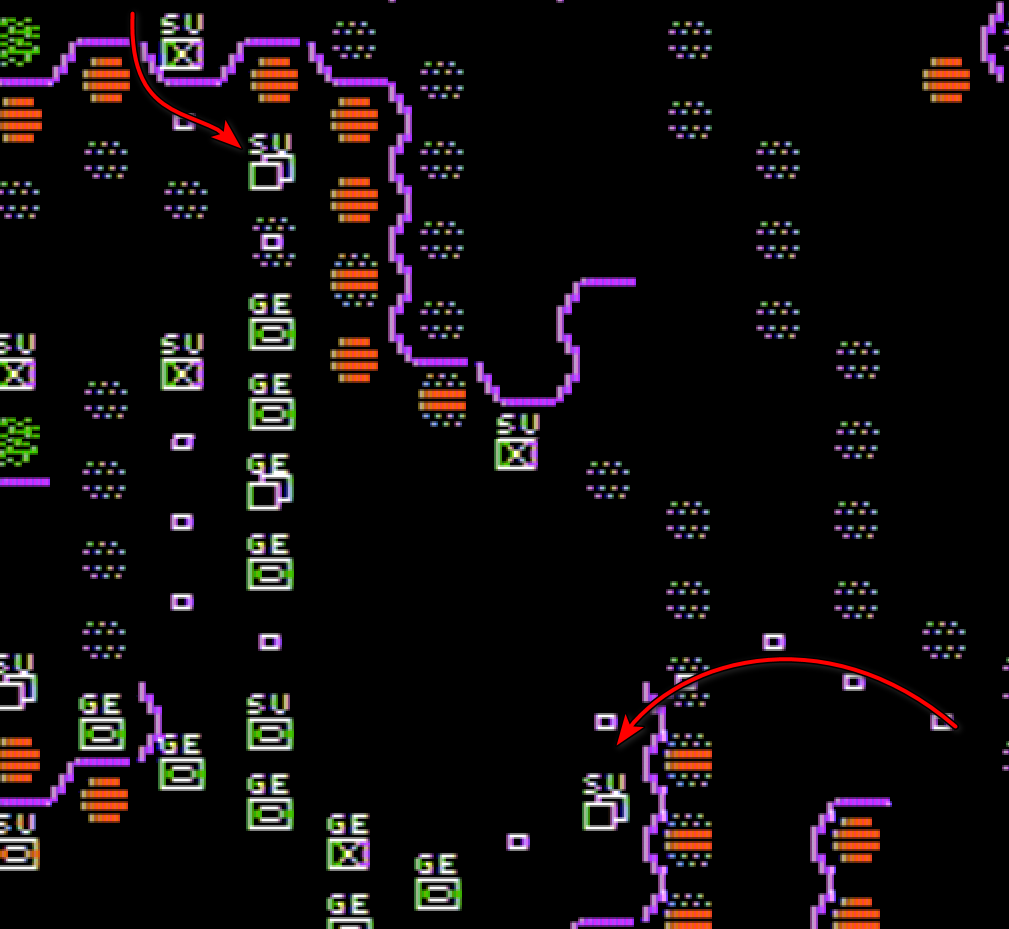
All I have to do is surround those two divisions, soften them up with my air force and attack them: with nowhere to retreat, they are immediately destroyed!
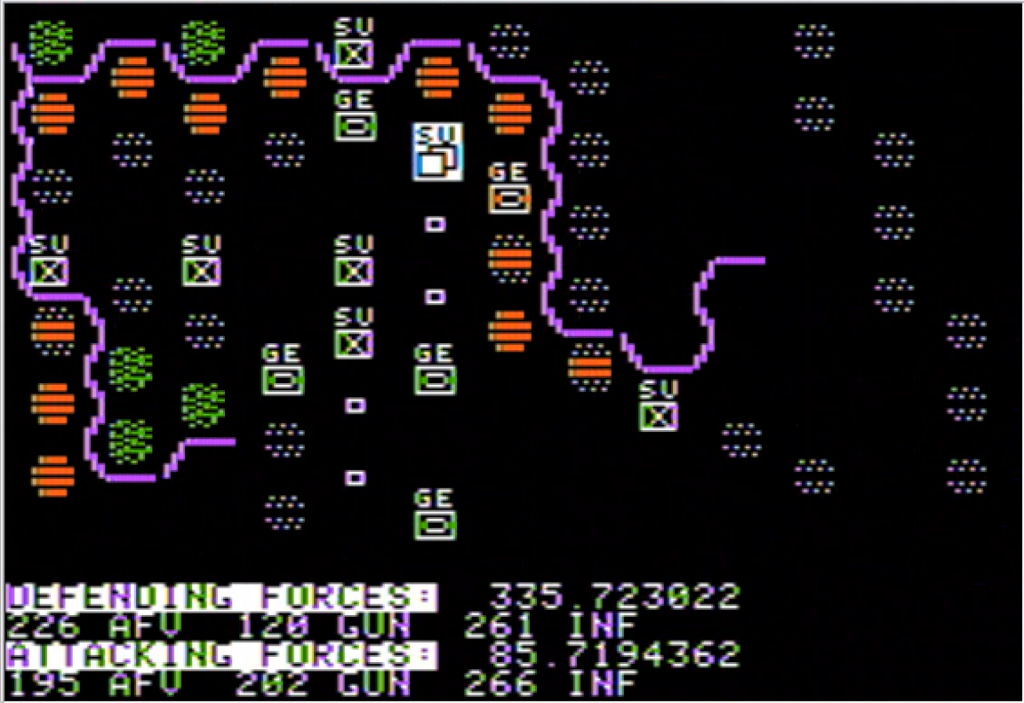
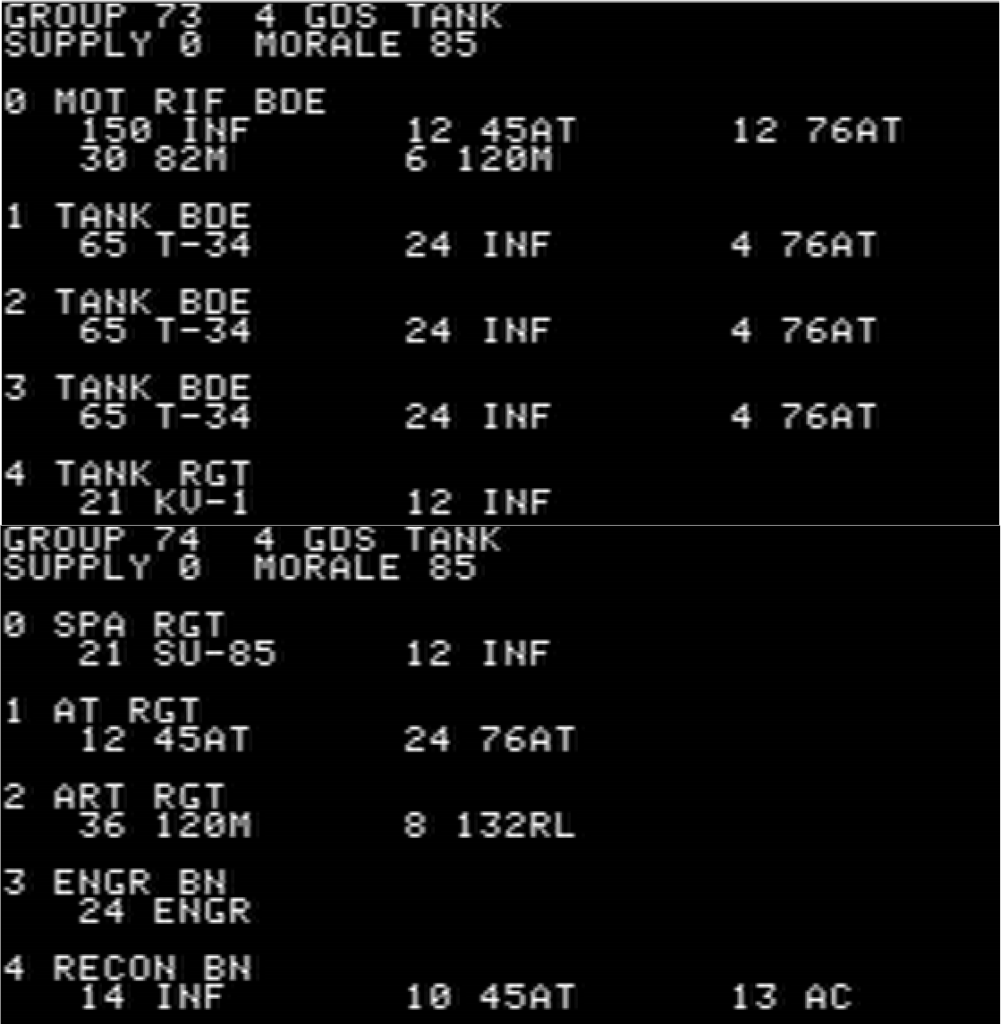
Unfortunately, I can’t follow up with an attack on Oboyan immediately as the Soviet infantry cut the road. As I reposition my combat groups, the Soviets receive on the 7th of July yet more reinforcements, including a Guard Mechanized Division that makes the exact same mistake as the Guard Tank Division one day earlier and stopped in “Road” mode not very far from my Panzer Divisions. Using a somewhat convoluted plan, I manage to destroy it, along with an infantry division!
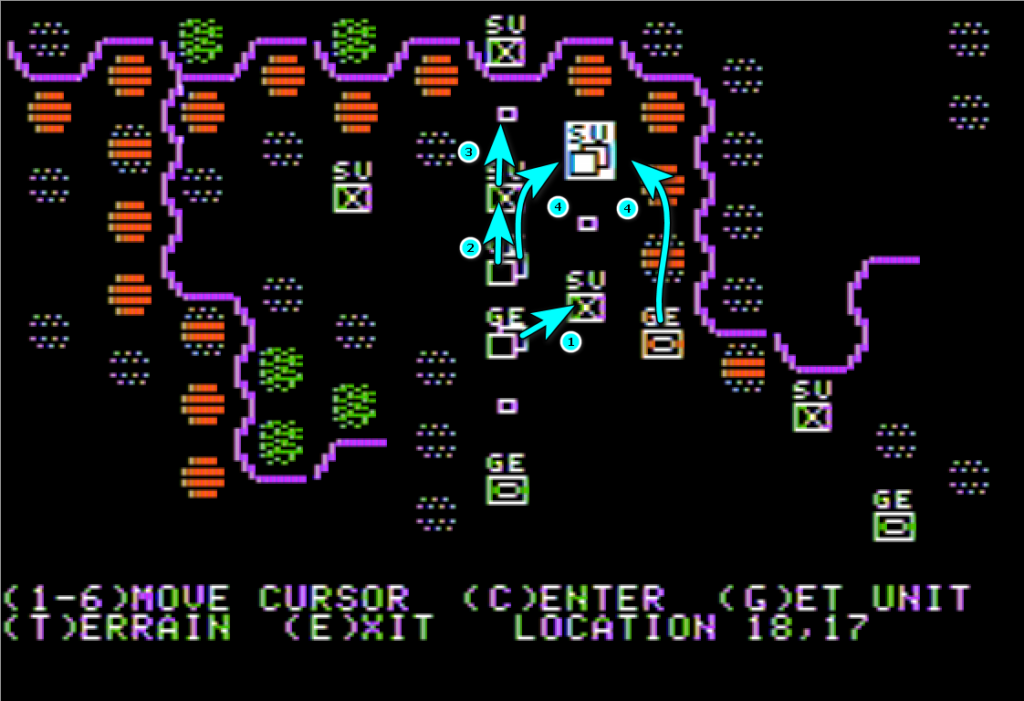
Crushing for almost no cost Soviet Tanks and Mechanized divisions gives me a lot of confidence, and I try to reduce the huge Soviet force North of my starting position. It works well initially, and then suddenly not so well: my forces lose their cohesion in several failed attacks, and when the Soviets counter-attack my combat groups fall back, with one of my most elite units destroyed.
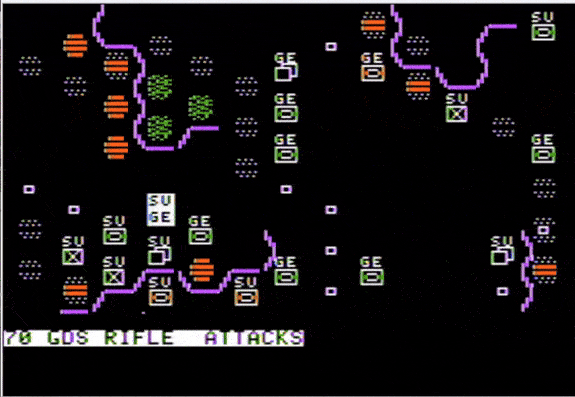
I have destroyed most of the reinforcements coming from the North, but the Soviets have more coming from the East, and are also breaching my sanitary cordon in the West. The evening of the 8th, the Soviets cut the road to Oboyan.
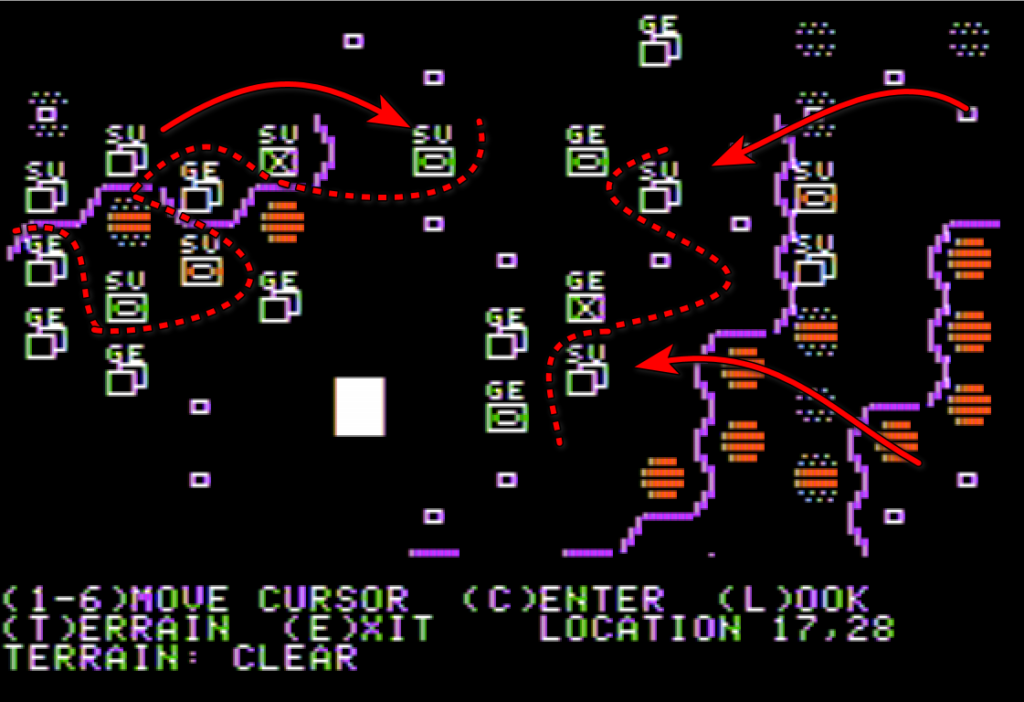
My officers frantically call back the restaurants in Kursk to cancel their reservations – we’re back to square one.
C. Despair & Depletion (9th to 12th of July – turns 10-16)
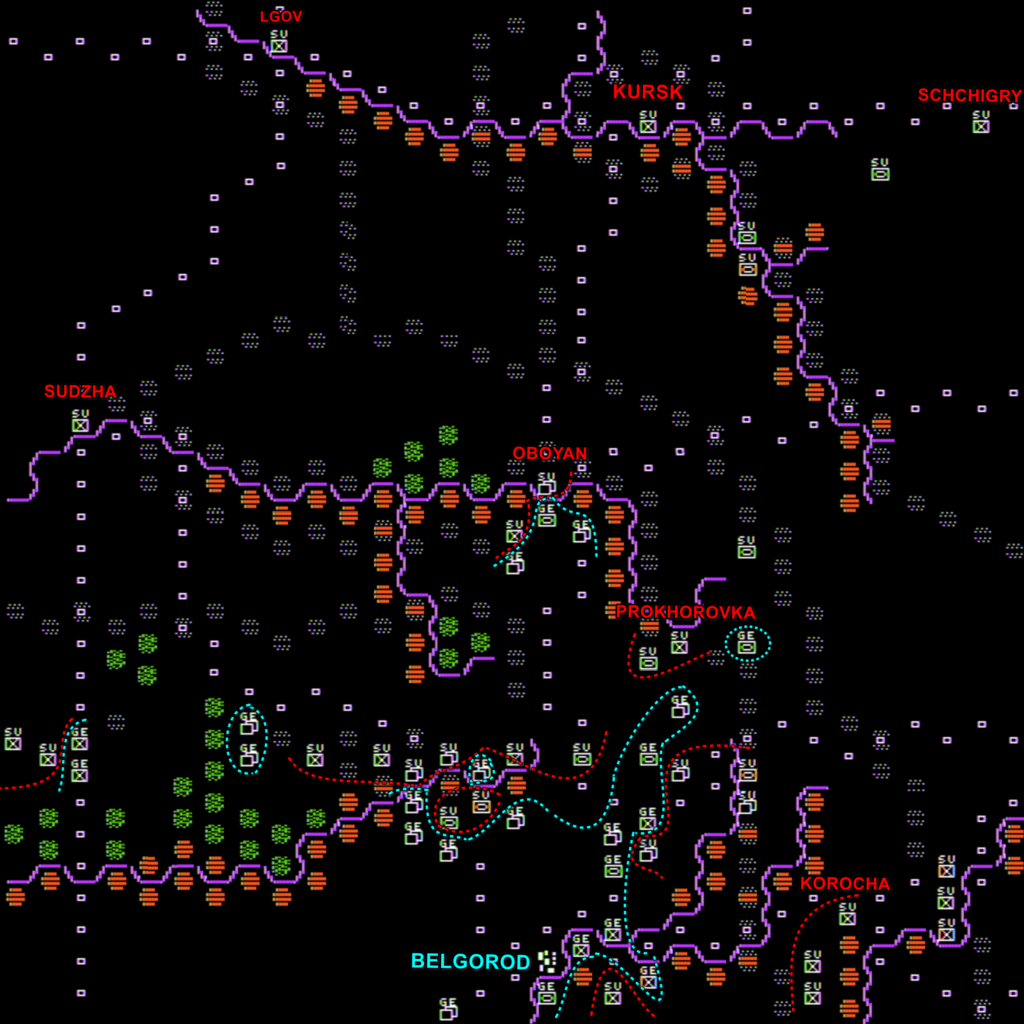
The morning of the 8th, I was confident I would just steamroll over the Soviets. The morning of the 9th, I am not so sure anymore.
I have two problems: the first is that the supply line between Oboyan and Belgorod is cut. In Objective Kursk units on the frontline can typically carry 12 in supply, with every movement or attack costing 1. To resupply, they must be reached during the “supply phase” by a depot unit that starts at the bottom of the map with 15 supplies, loses 1 in supply every time it travels on a non-road hex and can’t enter an enemy zone of control. Just like in War in Russia, the depot can supply as many units as it can reach in one turn and you can “reset” it to its starting location to supply even more units.

But the most pressing issue is not the supplies. Rather, it is how depleted some of my units near Oboyan are:

I can’t send them anything, as right now I am trying to prevent the Soviets from closing the breach. The good news is that the Soviets received the last of their reinforcements, and I still have some coming on my side, so I don’t think the situation is going to get worse…
… except it does, because my units are not in a position to support one another. The 10th, the Soviets destroy my “gully” units and tightly close the breach.
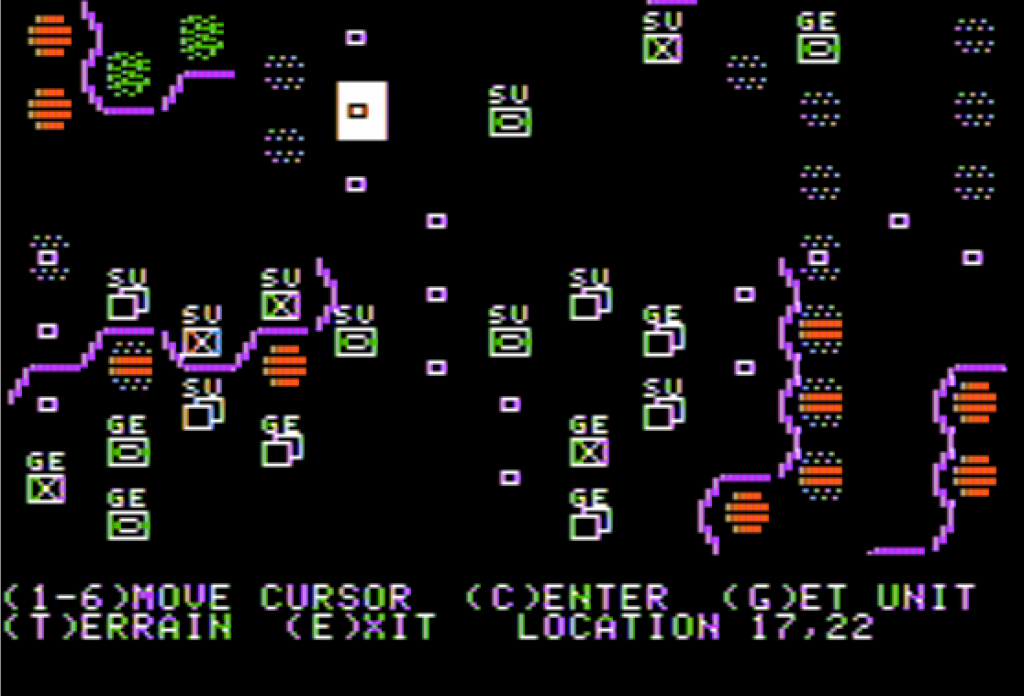
Still, some of those Soviet units are nothing more than recon battalions, and I have one advantage: some of my own units are behind the Soviets and can turn a retreat into a wipeout. I methodically attack the Soviet units one after the other:
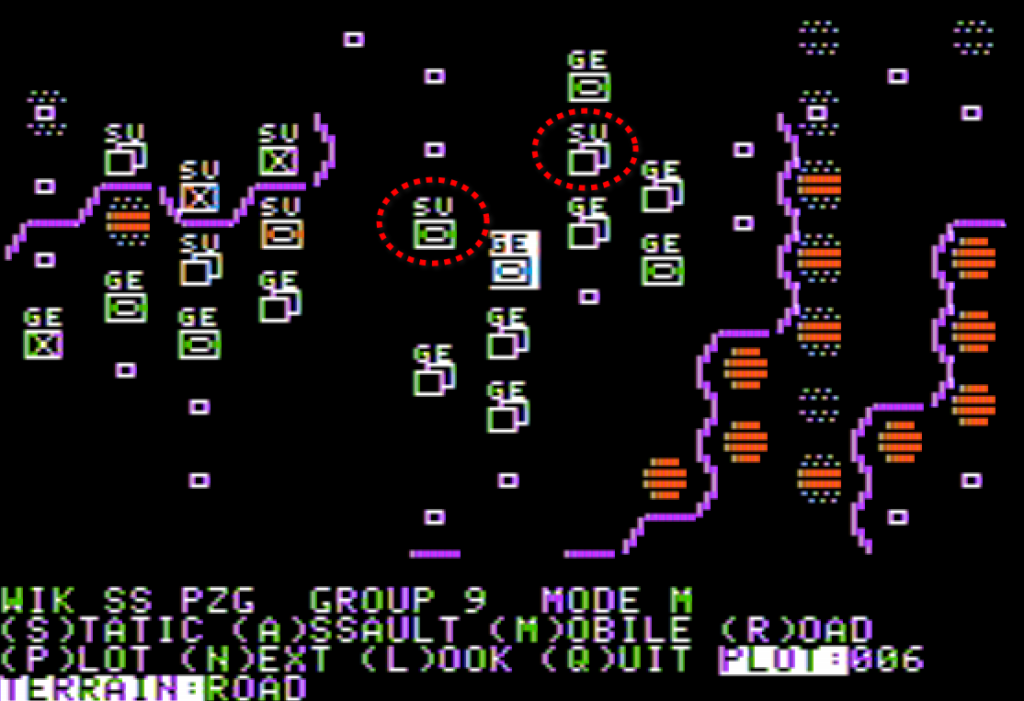
This isn’t as easy as it sounds. The Soviets on the flanks are relentlessly attacking, and with 4 impulses per turn I need to guesstimate the Soviets’ movements. As for the Soviets on the road, they are in a defensive position, which means they can use their AT guns defensively. This is incredibly costly for both sides, and some of my units are so damaged that they should not realistically still exist as combat groups – but they do, so I use them as retreat blockers:
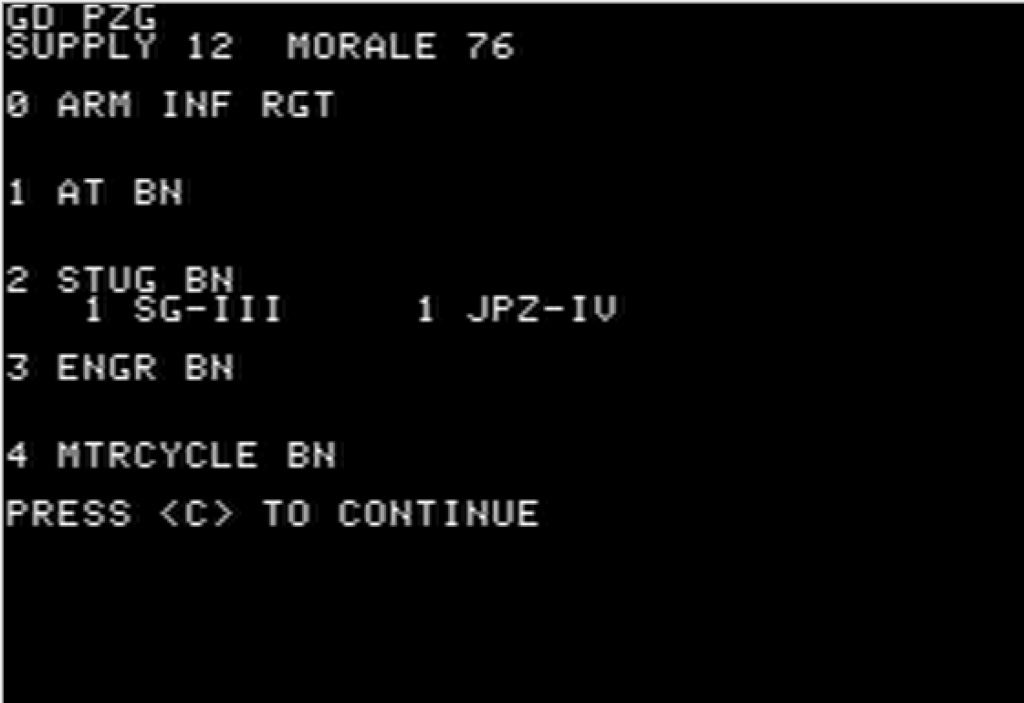
Finally, the morning of the 12th, I manage to reopen the road for good:
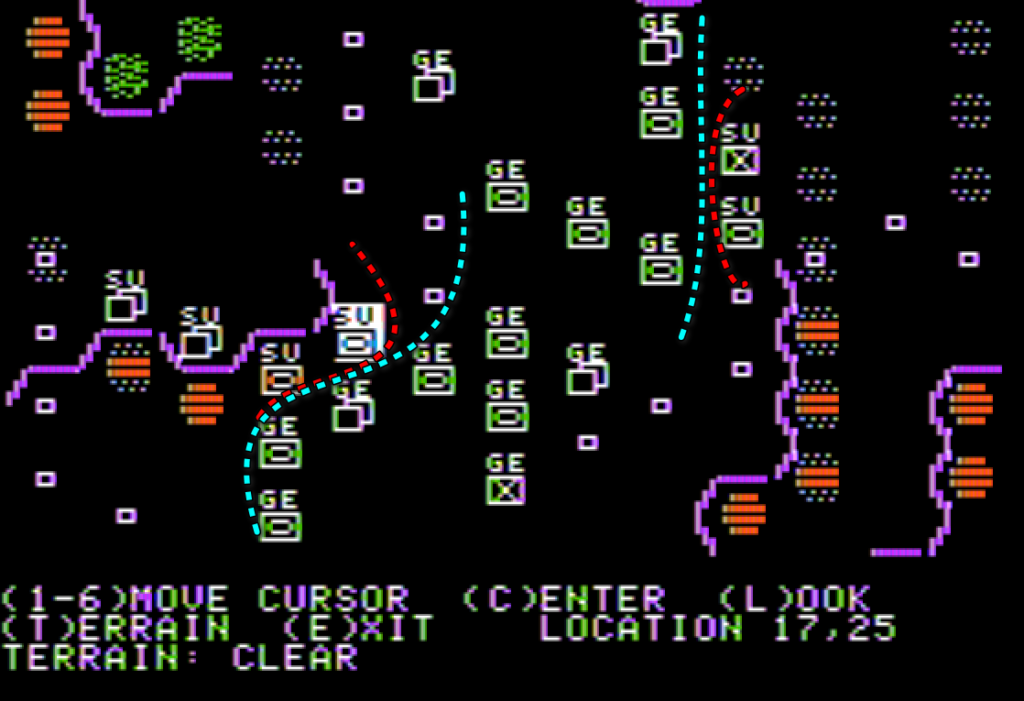
The officers can finally call back the restaurant in Kursk to book the tables again, except now one table for two should be enough, thank you very much.
D. Objective Kursk (12th to 15th of July – turns 17 – 23)
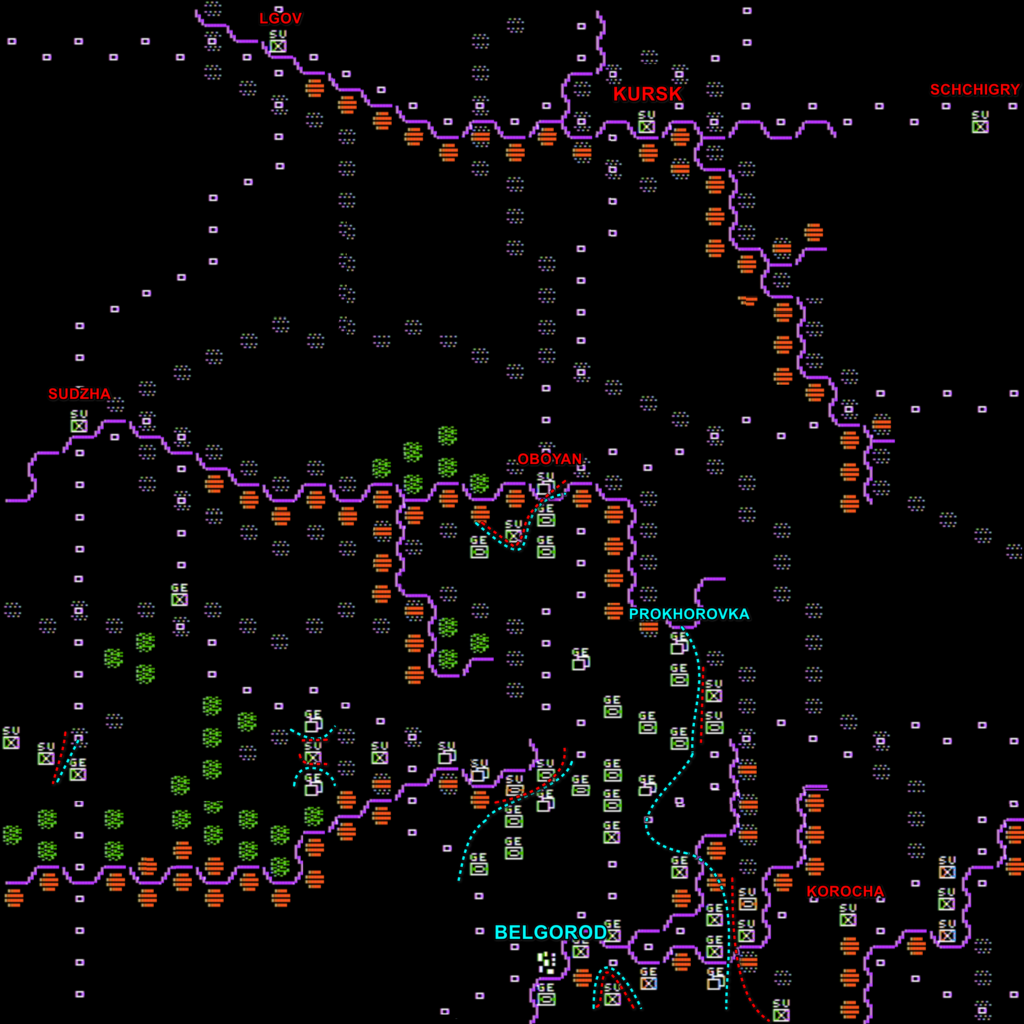
Casualties have been huge on both sides, but the road to Obayan is open again. I have 3 and half days left and a lot of territory to cross, so browsing through my units I find a couple that are only 50% depleted and send them North. The plan: attack Oboyan and then Kursk by daytime with the support of all my air force every time to force the garrison to retreat with only limited ground forces engaged.
The first part of the plan works perfectly, and Oboyan is captured on the 13th!
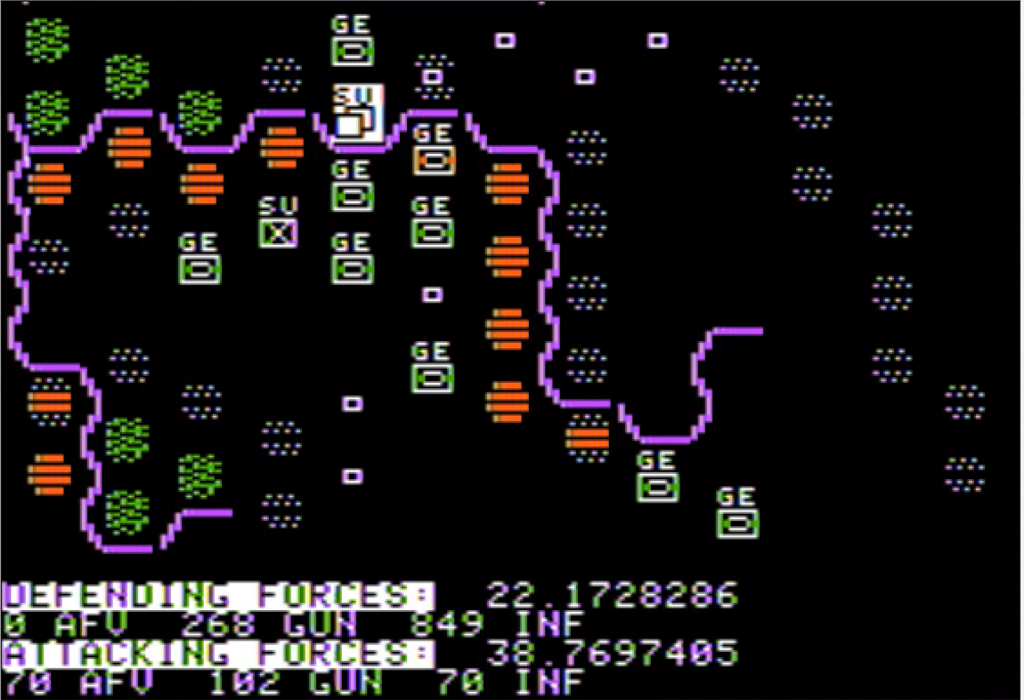
After that, I take the road North to Kursk, not slowed down by the only turn of bad weather of the campaign (10% odds of happening every turn, it makes the supply depot unit unable to leave the road and gullies/rivers extremely costly in cohesion to cross). I am still on the road on the 14th, so I use my airplanes to support an infantry attack on Sudzha, but this time the land attack is really too weak to dislodge the defenders. Finally, I reach Kursk on the morning of the 15th and take it:
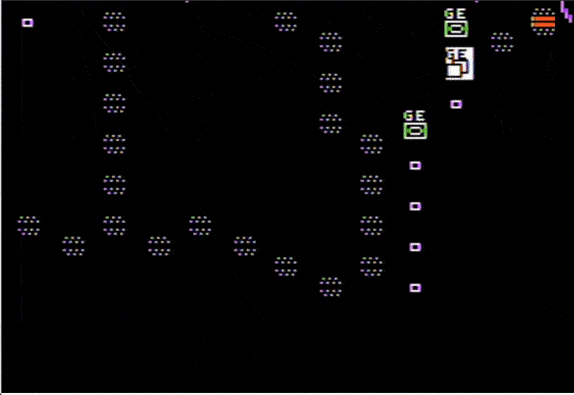
The game ends one turn later:

According to the manual, victory level is determined by substracting the German VPs from the Soviet VPs. Anything above 80 000 is a Soviet victory, anything below 20 000 is a decisive German victory. With -11 240, I am definitely in this category!
This victory is a surprise – on turn 12 I was sure that I would lose. Taking Kursk at the last possible day shifted 50 000 points between the Soviets and me (the city is worth 25 000). Still, most of my points come from destroying Soviet units – a comparison with the starting scores shows how unrealistically bloody the battle was:

This also shows that I was right after all to try to destroy the forces North of my starting position around turn 8, and if anything I haven’t ignored Oboyan and Kursk enough. The key to win Objective Kursk is not to rush to Kursk, but to win a huge brawl near the starting positions, but I suppose Objective Destroy The Soviet Divisions does not have the same ring to it.
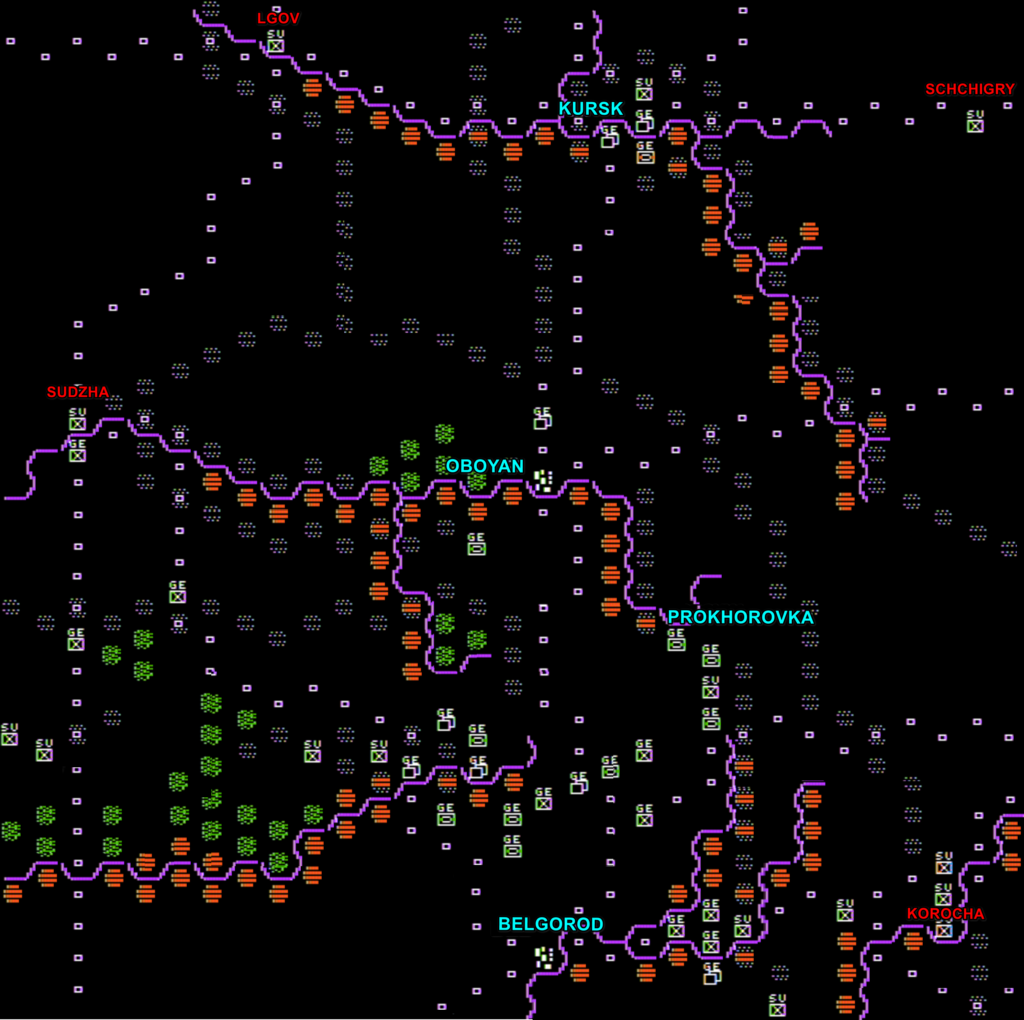
Ratings & Reviews
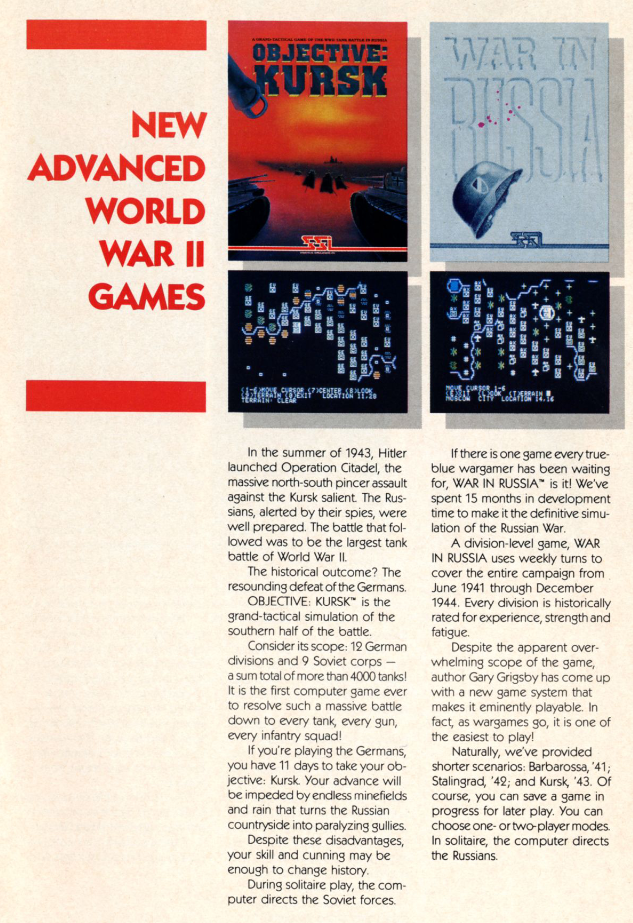
Objective Kursk by Gary Grigsby, published by SSI, USA
First release: May 1984 on Apple II and Atari 8-bits
Genre: Land Operations
Average duration of a campaign : 5 hours
Total time played: 8 hours
Complexity: High (3/5)
Rating: One-star
Ranking at the time of review: 41/138
Context – After finishing War in Russia and handing it to Joel Billings for testing & balancing, Grigsby moved to a smaller project, either because he could never add the level of detail he yearned for in War in Russia, or because he realized he could not churn monster wargames faster than Billings and the rest of SSI could test them. As he did for Guadalcanal Campaign – Bomb Alley – North Atlantic ’86, Grigsby reused the War in Russia engine, an engine that was not fully his own as it was created using HexPac, an internal SSI tool created by Paul Murray (probably). HexPac standardized the hexagon size chosen by Roger Keating in Southern Command and Germany 1985, and ensured consistent performance between SSI games when navigating the map.
Objective Kursk keeps some key features of War in Russia (in particular how the turn is cut into phases and how orders are plotted and then executed by impulse) but combat resolution has been totally redone, with the game tracking individual elements of brigades rather than simply adding the strength of up to 6 divisions by unit. Balancing this increase of difficulty, several other elements have been justifiedly streamlined: there is no entrenchment, no production, no replacement and the air force is totally off-map. This, in addition to the lack of content (only one scenario without any customization), justified a smaller price: only $39.95 compared to $79.95 for War in Russia. Objective Kursk was only ever released on Apple II and Atari.
Traits – Once again, Grigsby reached a record with the level of detail of his simulation: the order of battle of the Battle of Kursk is laid down to the level of the individual vehicle or squad (10 men).

Unfortunately, “more detailed” does not necessarily mean “deeper”. Most games giving you this level of detail expect you to intuitively “feel” how your units will perform (“T-34s completely overgun my Panzer III, but if I bring my Tiger tanks they are toast”), but this is lost when combats are not built chiefly around individual losses but around a fleeting “disruption value” – intuitively, can you say how much disruption points 60 T-34 will cause to 40 Panzer-IV?

More detailed does not mean more immersive either – sometimes, abstraction can feel more realistic. The cRPGAddict once noted that no one objected to food healing you in RPGs, until food stopped being called just “food” and started to be specifically described (salad, apple,…) and then everyone discovered how it was absurd that apples would heal you from stabbing wounds. Similarly, I never questioned that a depleted unit could prevent a Soviet division from retreating and force its destruction in War in Russia, but now in Objective Kursk I can’t help but notice said depleted unit repeatedly triggering the destruction of full Tank Divisions is actually two guys on a motorcycle. And that feels off.
Finally, for all its nominal depth, Objective Kursk plays a lot like any tactical beer-and-pretzel game, albeit one with less information. It is not boring, but I have played the “surround the enemy hexagons so they can’t retreat” mini-game dozens of times, including a few times for this blog already.
Did I make interesting decisions? Yes, though I eventually realized that only the tactical decisions really mattered, and even then these included a lot of second guessing how the AI would move to intercept their forces at the third or fourth impulse.
Final rating: One-star. Not bad, not terrible, but to quote Evan Brooks: “somewhat bland“.
Reception
Objective Kursk, a relatively minor game compared to the usual SSI production, received few reviews, and the general vibe was “adequate but not great“. Most critics pointed out the lacklustre documentation, the tedious controls and the fact that it does not feel different from any other wargame. For instance, Neil Shapiro for Electronic Games (December 1984) found that the game was a “fine historical simulation“, but lacked [the] “fluidity, control and understandable challenge that I personally look for when I feel like gaming”. Similarly, Evan Brooks gave the game 2 stars and half in various reviews for Page 6 and Computer Gaming World, Jeux & Strategie gave the game 3 stars out of 5 and Tilt 4 out of 6, which is average-good for the magazine. Only a review by Olivier Tubach writing for the French magazine Casus Belli in late 1984 (issue #22) stands out: he clearly loved the game, which he won by using the Western route through Sudzha, a strategy I find ballsy.
Objective Kursk was not a commercial success, with fewer than 4 000 copies sold in the US (War in Russia or Rails West! sold around 7 000, and Questron 34 000!) but this is something that SSI would not know for a few months. Meanwhile, Grigsby started designing another game with the same engine, but in a contemporary setting: Reforger ’88. I will cover this one soon.